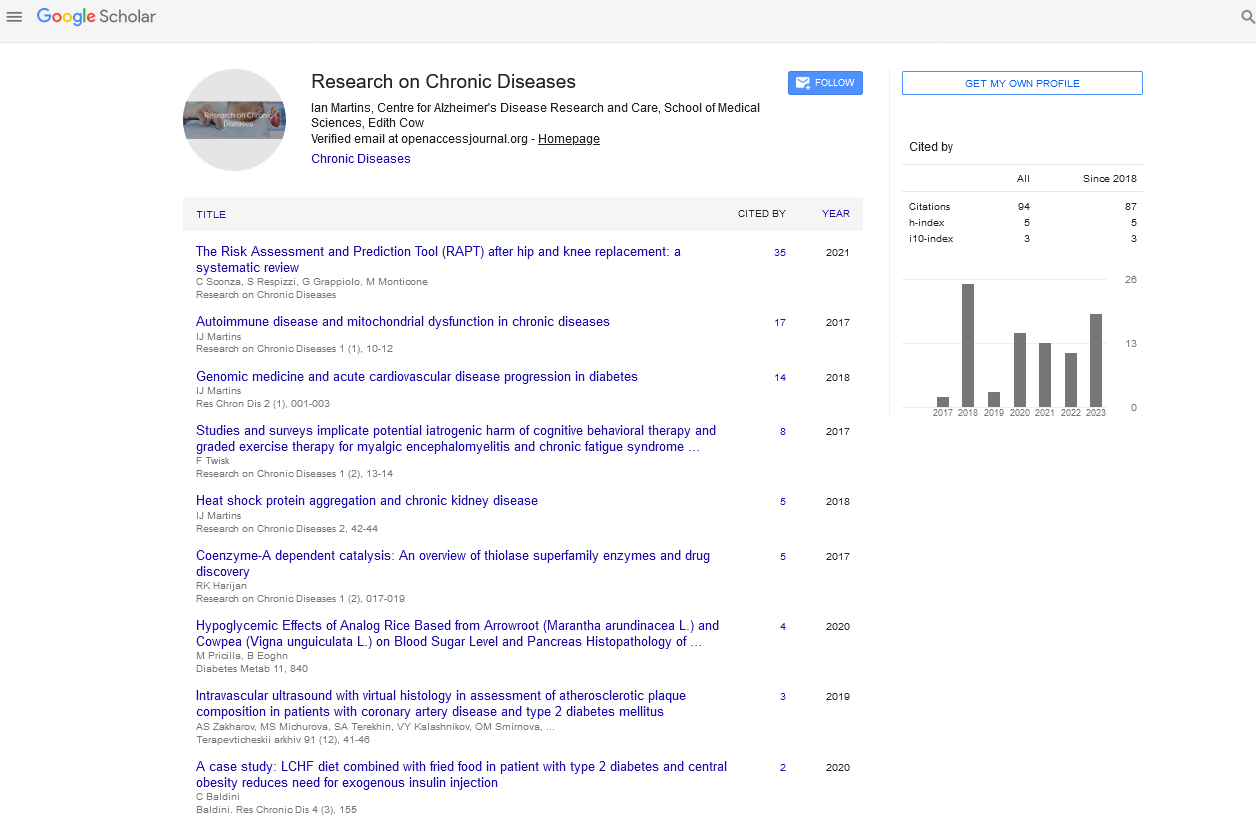Short Communication - Research on Chronic Diseases (2020) Volume 4, Issue 3
Analysis of Characteristics of patients affected by pathology of the diabetic foot of ASP Palermo territorial polyambulator
Maria Concetta Cataldo
ASP Palermo, Italy
Abstract
“Diabetic foot” plays a major role in diabetology from both the clinical and social perspectives. Conse¬quence of its macro/ micro vascular and neuropathic complications is among the leading causes of hospi¬talization and not traumatic lower limb amputations. Patients with foot ulcers suffer also a reduction of their quality of life.
Aim: To describe diabetic patients’ characteristics suffering from foot ulcers who access territorial care.
Methodology & Theoretical Orientation: we conducted an descriptive retrospective observational study of patients with ulcerate the foot. Personal and so-cio-sanitary data were recorded Also duration of the disease, practiced therapy and foot conditions: skin, monofilament pressure sensitivity, trans¬cutaneous oxygen pressure, vibrator sensitivity to biotesiometer and Ankle Brachial Pressure Index (ABPI) evaluation. As a marker of glycemic remedy we analyzed the value of HbA1C. They were ana¬lyzed as cardiovascular risk factors hypertension and Body Mass Index (BMI). Foot injuries have been classified with the University of Texas Wound Clas¬sification System. The correlations between patient foot injuries and variables have been analyzed, such as comorbidity with the Cumulative Illness Rating Scale (CIRS), BMI.
Findings: Our study shown a greater incidence of foot injuries in diabetic patients with simultaneous ¬serious illnesses compared to the severity of a single pathology. The gender is not relevant characteristic to the HbA1c values. Conclusion & Significance: the comorbidity showed to be a sig-nificant risk factor compared to other characteristic examined. We consider it useful to launch health pro¬motion programs by organizing self-help groups, in¬volving care-givers in the management of the disease.
Publications
1. Effectiveness of a follow-up program in diabetic patients with foot ulcers.
2. A healthy physical exercise.
3. Diabetes and disability: Observational study on functional recovery in patients in integrated home care.
4. Comparative study on the rehabilitation results of patients in integrated home care: Comparison between the traditional rehabilitation method with training and the use of personalized exercises during treatment.
5. Association of total serum cholesterol with functional outcome following home care rehabilitation in Italian patients with stroke.
